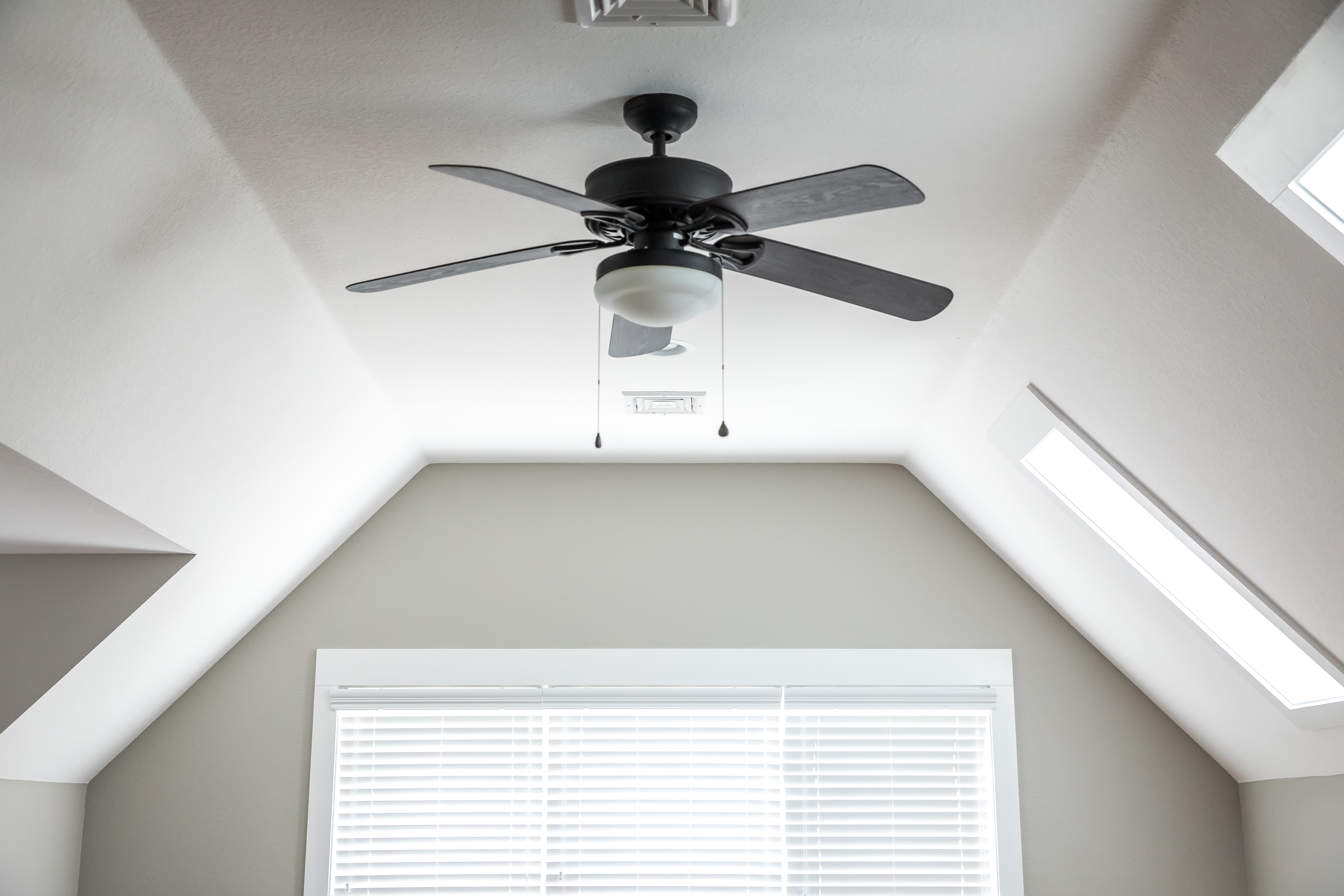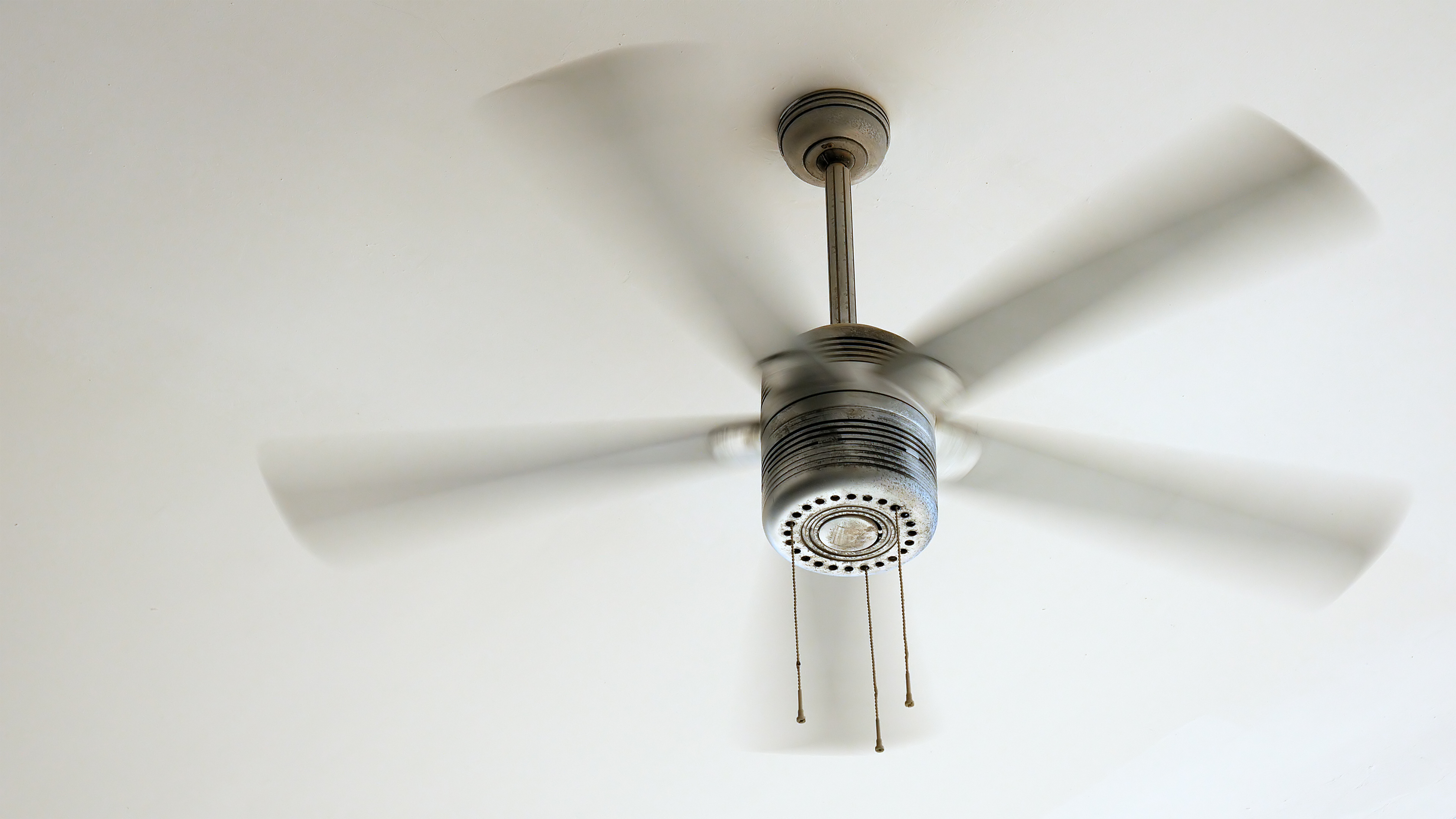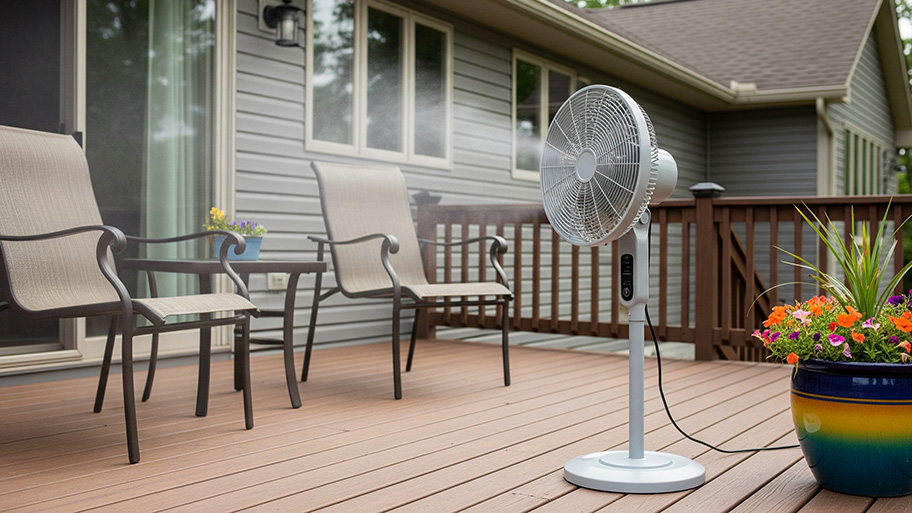
Discover the cost to install a ceiling fan, including labor, materials, and tips to save. Learn what impacts your price and how to budget for your project.
A breath of fresh air


A ceiling fan that is properly functioning brings many advantages, such as better ventilation, steady airflow, and cooling. Like all other appliances, regular maintenance is essential for keeping your ceiling fans working and maximizing their lifespan, while preventing common ceiling fan problems. Here is a checklist for daily, weekly, monthly, and seasonal ceiling fan maintenance routines.
Having the right tools can make ceiling fan maintenance go a lot faster and smoother. Some recommended supplies for maintaining your ceiling fan include:
Microfiber duster or fan-blade brush
Handheld vacuum
Soft cloth or microfiber duster
Dish soap and/or degreaser
Lubricant oil
Screwdriver
If you plan to maintain your ceiling fans yourself, be sure to always turn them off and wait for the blades to come to a complete stop before touching them.

Ceiling fans only require minimal daily attention. Here are some things you can do every day, especially during the seasons when you don’t need the fan, to ensure your ceiling fans will work properly when the time comes:
Visual inspection: check for signs of damage on the fan blades
Switch on/off: Turn your ceiling fan on and leave it running for at least a few minutes once a day to check for wobbles, unusual noises, and motion issues.
While these tasks are minimal, they can help you catch common ceiling fan problems at an early stage. For example, a squeaky sound means your fan needs lubrication. Doing that early prevents fan hardware from grinding against each other, which can cause more problems.
A weekly ceiling fan cleaning routine can keep your fans spinning smoothly. Common weekly ceiling fan maintenance tasks include:
Vacuum or dust the fan blades: Use a handheld vacuum or a microfiber duster to clean the surface of the fan blades, removing the dust that has accumulated over the week.
Clean the fan cover: Use a soft cloth to wipe the fan cover clean. For kitchen fans, you may need a degreaser to remove the grime collected on the surface.
Tighten loose screws: Try turning the screws with your fingers. If they are loose, tighten them using a screwdriver.
For your monthly ceiling fan maintenance, fulfill the following tasks:
Deep cleaning: In addition to regular vacuuming and wiping, use a soft-bristled brush to clean the motor housing and any vents or grooves thoroughly. Then, clean the fan blades with a cleaning product to remove any stubborn grease and grime. Finally, wipe down the pull chains with a wet cloth.
Lubricate the motor: Certain types of ceiling fans require periodic lubrication. Use a straw to check the lubricant level in the reservoir. If it is low, add a few drops of fan oil.
Rebalance fan blades: If your fan wobbles but the screws are tight, you may have imbalanced fan blades. Use a fan blade balancing kit to rebalance or hire a fan technician.
Check for loose mounting: Vibrations caused by your ceiling fan can gradually shake the mounting loose. This is one of the top reasons why a ceiling fan may fall. Depending on the types of ceiling fan mounting brackets you use, you may need to hire a ceiling fan technician to repair any loose mounting or reinstall the fan with stronger holds.
Seasonal ceiling fan maintenance ensures your ceiling fans are always at their peak energy efficiency and do their job properly. For example, if you notice your ceiling fans aren’t cooling effectively, you might have forgotten to switch the fan blade direction when summer arrived. Proper seasonal maintenance can also reduce your maintenance responsibilities until the next seasonal checkpoint.
Ceiling fan directions for winter and summer are different because heat rises and cool air sinks. In summer, your fan should rotate counterclockwise to distribute cool air. In winter, it rotates clockwise to push the warm air down toward you. Smart ceiling fans have a dedicated direction switch button on the remote. Pull-chain ceiling fans have a direction switch on the fixture or fan body.
You should also schedule seasonal ceiling fan maintenance with a trusted ceiling fan installer or repair technician. These inspections often cost less than $200 but could save you big money since a trained technician can catch motor issues, failing wiring, and other safety concerns.
If your technician notices signs your ceiling fan may fall, they could suggest a reinstallation or replacement. This allows them to either move the fan to a better spot with more support or install it using stronger mounting hardware. The cost to replace a ceiling fan varies from $660 to $1,100 per fan, depending on whether additional electric work is required.
From average costs to expert advice, get all the answers you need to get your job done.

Discover the cost to install a ceiling fan, including labor, materials, and tips to save. Learn what impacts your price and how to budget for your project.

If your ceiling fan stops working due to a bad motor or broken pull chain, here’s what you can expect to pay to get it fixed.

Hiring an electrician to install a ceiling fan will make the process safer and easier. But before contacting a pro, ask yourself these ceiling fan questions.

If your ceiling fan is wobbling, it’s likely a simple problem. Check out these common reasons why your ceiling fan wobbles and their quick solutions.

A 3-blade vs. 5-blade ceiling fan varies in design and function. Learn the differences between them so you know which is best for your space.

It's time to cool off! Learn 10 ways to make your room cool without an air conditioner in this informational fan hack guide.